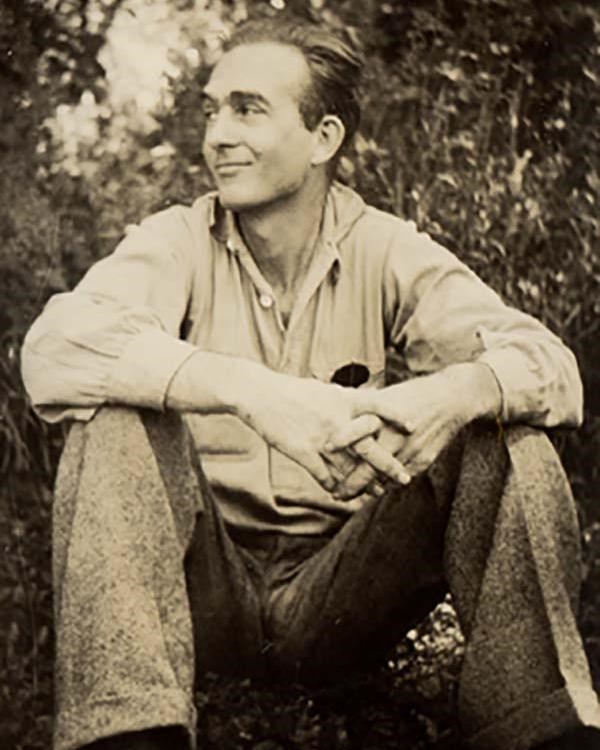Last updated: February 14, 2022
Person
Paul St. Gaudens

NPS Photo
Quick Facts
Significance:
Another member of a talented and artistic family, Paul created his own innovative style of ceramics in the American art pottery movement.
Place of Birth:
Flint, OH
Date of Birth:
June 15, 1900
Place of Death:
Boston, MA
Date of Death:
February 1, 1954
Place of Burial:
Cornish, NH
Cemetery Name:
Chase Cemetery
Paul St. Gaudens was an innovative ceramicist and pioneering member of the American art pottery movement of the early 20th century. As the nephew of the renowned sculptor Augustus Saint-Gaudens and son of a sculptors Louis and Annetta St. Gaudens, Paul St. Gaudens started his artistic career at a young age.When asked why he did not pursue sculpture like his parents and uncle, St. Gaudens replied, “I don’t think I have just that kind of talent. I’ve always loved to draw, but I think I should choose pottery because it gives you both form and color to experiment with. And, besides, the mechanical and chemical processes are infinitely fascinating.” [1] Paul St. Gaudens was born to Louis and Annetta St. Gaudens on June 15, 1900 in Flint, Ohio. At Augustus Saint-Gaudens’ request, the family migrated to Cornish, New Hampshire in 1902 to assist with Augustus’s studio. Paul St. Gaudens grew up around Cornish and engaged with the surrounding Cornish Colony members as a child. In 1905, at the age of 5, he participated in the ‘Masque of the Golden Bowl’ on the Aspet property. In 1913, St. Gaudens participated in his second masque as a Scarlet Tanager in Percy Mackaye’s ‘Bird Masque,’ which occurred at the Meriden Bird Club Sanctuary in Meriden, New Hampshire. This pivotal performance in the conservation movement was where St. Gaudens cultivated lifelong friendships with his generation of the Cornish Colony. Both Paul St. Gaudens and his mother Annetta shared their interest in the ceramic arts and they explored the medium together. In 1918, Paul and Annetta St. Gaudens grew their talents while working with the renowned potter Frank Applegate in Plainfield, NH. In 1921, Paul and Annetta St. Gaudens established their own kiln in Cornish: Orchard Kiln Pottery. The kiln remained in operation from 1921 to 1944. St. Gaudens’s artistic training would take him all around the country and beyond. He studied ceramics in many locations including the Museum of Fine Arts School of Drawing and Painting in Boston, the Trenton School of Industrial Arts in New Jersey, and Omar Khayyam Pottery in Chandler, North Carolina under Oscar Batchelder. Paul and Annetta St. Gaudens also travelled Europe in 1922 to gain a deeper understanding for their own practices. The mother-son duo journeyed to London, Paris, Rome, Naples and Florence and visited many pottery workshops and art academies along the way. Paul St. Gaudens created a vast scope of work over his lifetime, including ceramic flower pots, tiles, figurines, and plates; many of these reside in the Saint-Gaudens National Historical Park collection today. St. Gaudens mixed his own glazes, creating vibrant colors that are present throughout all his work. He was also deeply interested in Mayan, Persian and African motifs from his travels with his mother. In 1936, St. Gaudens married a fellow artist, Margaret Parry. They settled down in Florida, where Margaret worked on her jewelry and Paul and Annetta worked on their ceramics. St. Gaudens also had his own studio in Coconut Grove, Florida: Pelican Pottery. He was very impacted by the death of his mother in 1943 and quietly divorced Margaret in 1948. During the last few years of his life, Paul St. Gaudens wrote many articles and publications that transcribed his technical knowledge and thoughts on the craft. On February 1, 1954, Paul St. Gaudens died from Hodgkin’s Disease. |
[1] Alice Van Leer Carrick, “The Orchard Potteries,” Country Life, January 1926, p. 50
